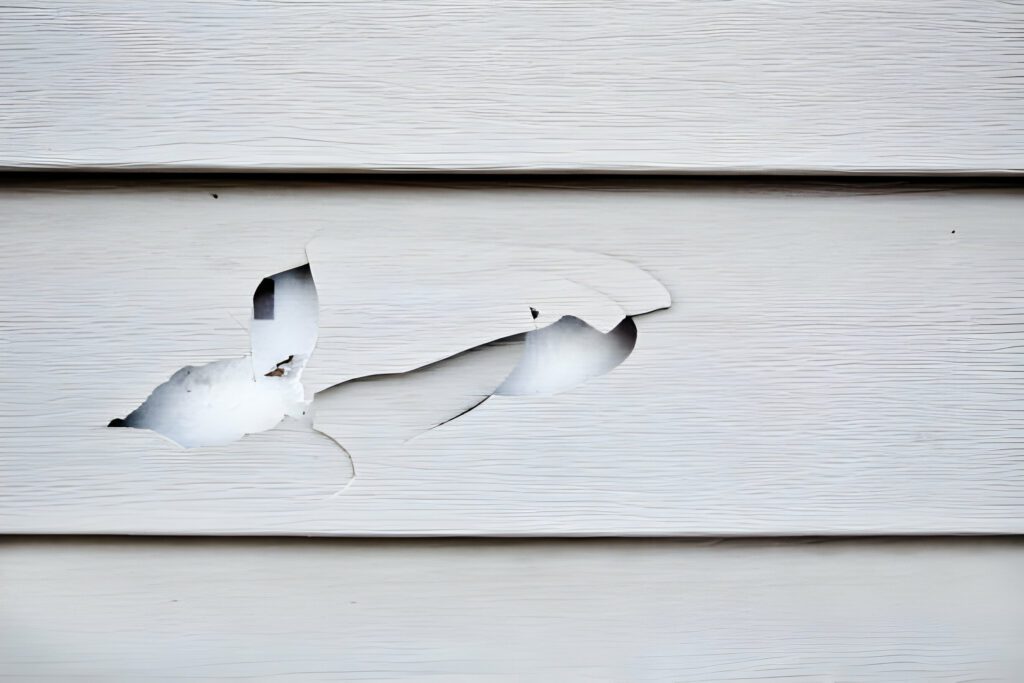At Mountain Plains Agency Inc., we know the destruction a serious hailstorm can cause. From damaged roofs and siding to smashed windows, hail can leave homeowners with expensive repairs. As hail storms increase in frequency and severity nationwide, it’s crucial to protect your most valuable asset – your home.
In this comprehensive guide, we’ll walk through smart strategies to defend against hail damage before, during and after the storm. Follow these proven tips from Mountain Plains Agency Inc. to minimize risks and maintain your property’s safety and value.
Assessing Your Risk of Damage
While hail can happen anywhere, certain states see more frequent and larger hailstorms. Northern and central Texas, Nebraska, Colorado, Wyoming, and Oklahoma tend to have the highest risk. Metro areas in these states with over 500,000 people are particularly vulnerable.
Areas downwind of mountains experience more hail due to uplift dynamics. When cold fronts collide with warm, moist air, severe thunderstorms are sparked.
Properties in these hail-prone regions should take precautions:
- Homes with shingle roofs are more susceptible than metal or tile roofs. Tile and metal resist hail impact better.
- Roofs with multiple valleys and slopes or elevated sections are more prone to damage. Hail collects in low points.
- Homes surrounded by or near tall trees run a greater risk. Falling branches add to hail’s wallop.
- Older homes are generally more vulnerable than new construction built to current impact-resistant codes.
Knowing your risk helps guide appropriate defenses and preparation when thunderstorms enter the forecast.
Preventative Measures Before the Storm
An “ounce of prevention is worth a pound of cure” when it comes to hail protection. Before storm season arrives, inspect for vulnerabilities that could worsen damage:
- Examine roof materials, flashing, vents and skylights for aging, lifted edges or existing cracks needing repair. Address issues to strengthen integrity.
- Trim tree limbs back from the roof. Prevent broken branches from amplifying the hail’s impact.
- Install impact-resistant window film or laminated glass as warranted to shield larger windows from fracture.
- For pitched roofs with shingles, apply a resilient coating that provides an extra layer of reinforcement.
- Upgrade to Class 4 impact-resistant roofing standards if older than 10-15 years. Newer materials resist damage better.
- Prep tarps or plywood to quickly cover windows, vehicles or valuables outside when hail nears.
Routine gutter cleaning also avoids clogging, so ice damming and water intrusion are minimized after the storm. And don’t forget to verify your insurance protection in the event repairs are needed!
What to Do During a Hailstorm
When a severe thunderstorm capable of producing hail moves your direction, it’s time to take shelter:
- Quickly round up family members, pets and valuables from porches, cars and outbuildings and move indoors.
- If possible, safely move vehicles into the garage or under cover to avoid external damage.
- Unplug TVs, computers and appliances and avoid using landline phones. Lightning strikes can lead to power surges.
- Stay clear of windows, doors, and exterior walls, as glass breakage and blows to the building are possible.
- Avoid contact with metal pipes and faucets during the storm, as lightning current can travel through plumbing.
- Listen closely to weather alerts for updates on the storm timing, path and intensity so you know when it’s over. Don’t venture out until the all-clear.
While frightening, most hailstorms pass through an area in 30 minutes or less. Keeping calm and taking quick protective steps can significantly reduce risk until the skies clear.
Inspecting for Hail Damage After the Storm
Once the threat has passed, walk the entire interior and exterior of your home to spot any hail-related impacts that need attention:
- Check the roof carefully from the ground with binoculars. Look for punctures, cracked or missing shingles, and structural damage around vents.
- Seek indentations, holes or glass breakage on siding, windows and skylights. Mark areas with masking tape.
- Document damage with clear, dated photos to share with your insurer and contractors.
- Cover any severe roof damage with tarps as a temporary waterproof barrier until repairs can begin. Avoid walking on the roof if possible to prevent injury or falls.
- Call a reputable local roofer to inspect in detail and provide an estimate for repairs to inform the insurance claim. Get at least 2-3 quotes.
Speedy damage detection helps prevent additional property issues like water damage or mold growth after a storm.
Working With Your Insurer After Hail Damage
Stay in close touch with your insurance company after filing a hail damage claim:
- Contact them promptly, ideally within 48 hours of the storm. Provide date, time and severity details.
- Email dated damage photos and contractor repair estimates directly to your claims adjuster to speed processing.
- Review your policy – in particular, the deductible amount and any exclusions or limits that may apply.
- Ask about recommended local contractors, or find established roofers to estimate costs independently.
- Clarify the claim decision timeline so you know when to expect approval and payment.
- Save all damage documentation, correspondence with the insurer, and receipts for out-of-pocket costs covered by the claim.
If the damage is extensive, don’t hesitate to call in a public adjuster to audit and maximize the insurance settlement on your behalf.
Tips for Choosing a Roofer for Hail Damage Repairs
Not all roofing contractors are equal when it comes to making storm repairs. Here are smart hiring criteria:
- Verify necessary licenses, bonding and insurance. Request documentation upfront.
- Choose a well-reviewed local company over “storm chasers” who swoop in from elsewhere.
- Get a detailed scope of repair work in writing, specifying materials to be used, timeline and warranties.
- Require interim payments based on progress milestones rather than a large upfront deposit.
- Ask for their protocol to protect home interiors and landscaping during roof tear-off.
- Look for established crews with proven experience conducting hail damage repairs.
Don’t feel rushed into signing a contract. A reputable roofer will allow ample time for your decision-making. Protect yourself and your property upfront.
Conclusion
Severe hailstorms strike suddenly and can wreak havoc on homes not properly prepared. Following Mountain Plains Agency Inc.’s proactive guidance, homeowners can reduce risks, minimize damage, and ensure repairs proceed smoothly when the skies turn ominous. A few reasonable precautions can save thousands down the road.
We hope these comprehensive, real-world strategies give you confidence to protect what matters most – your home and family. Mountain Plains Agency Inc. is here to answer any additional questions and provide customized insurance solutions that keep you covered in storm season and beyond. Contact us today!
Frequently Asked Questions About Hail Damage
Q: Does my homeowners insurance cover hail damage?
A: Most standard policies cover hail damage, but the extent depends on your coverage limits and deductible amount. Contact your agent to verify.
Q: Is it safe to make temporary repairs before an adjuster visits?
A: Avoid permanent repairs, but temporary measures like tarps to seal damage are appropriate to prevent further issues.
Q: Can I get proof of hail size during a storm for my claim?
A: Hail size estimates won’t impact your claim. Focus on documenting damage with photos, contractor estimates, and storm details.
Q: How long does it take for the insurance company to approve a hail damage claim?
A: It varies by circumstances but expect at least 2-3 weeks for adjusters and contractors to inspect and estimate costs for approval.
Q: If my roof needs full replacement, will insurance pay the depreciated value or replacement cost?
A: Most policies pay the full reasonable cost for sudden damage like hail. Agents can explain specific policy benefits.






